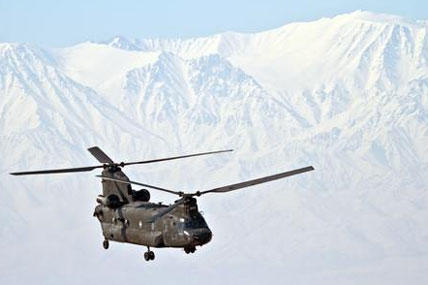FORT LAUDERDALE, Fla. -- The head of U.S. Army modernization said Friday that the approaching defense spending cuts will force the service to delay fielding of all of its combat lift and attack helicopters.
Fielding programs for the Army's AH-64 Apache, UH60 Black Hawk and CH-47 helicopters will be extended by up to five years, Lt. Gen. James Barclay III, the Army deputy chief of staff G-8, told an audience on the final day of the Association of the U.S. Army's Winter Symposium.
"All of these fielding programs are being pushed; we are just pushing the final year of when we would complete them out into the future," Barclay said.
Over the last decade, the Army has reprogrammed about $36 billion from the failed Comanche reconnaissance aircraft program and funneled the savings into upgrades on existing Black Hawk, Chinook and Apache aircraft.
Aviation is one of the many Army assets that will suffer if the massive spending cuts under sequestration begin March 1. The Army is facing an $18 billion shortfall in operations and maintenance funds over the next year. This would come on top of the financial woes the service is forced to endure from the continuing budget resolution it has operated under for the past 14 months.
Army officials maintain that it could save millions of dollars by awarding multi-year aviation contracts. The service saved $1.8 billion with the award of a fiscal 2012–2016 contract for UH-60M Black Hawks, officials said. In addition, the first multi-year contract for CH-47F Chinooks saved $449 million between fiscal 2008 and fiscal 2012.
The service could avoid $810 million with a pending fiscal 2013–2017 contract, a deal that has been delayed because of the continuing resolution on last year's defense budget.
"We are also trying to get the multiyear contract for the CH-47 … which equates to hundreds of millions of dollars in savings if we could execute that multi-year contract, but we are not going to be able to do it," Barclay said.
Home-station training is also expected to suffer severely under sequestration, Barclay said.
"We always go after training dollars; those are easy to pull away from units," he said, explaining that Army combat-arms units are going to have to rely more on virtual training as training dollars dry up.
Aviation training at Fort Rucker, Ala., has followed this model, Barclay said. Over the past five years, the use of simulators in flight training has increased from 18 percent to 39 percent, he said adding that the practice has resulted in 37 percent cost savings.
"That is the mindset we have got to get into," Barclay said.






























